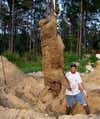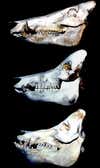Hogzilla Or Wilbur? Solving The Mystery Behind The Latest ‘Giant Boar’









There are Regular Moms and then there are Moms Who Hunt. Shop the 25 Best Mother's Day Gifts.









Want More of the Great Outdoors?
Stay adventure-ready with outdoor news that keeps you informed, not spammed.
LET'S GO